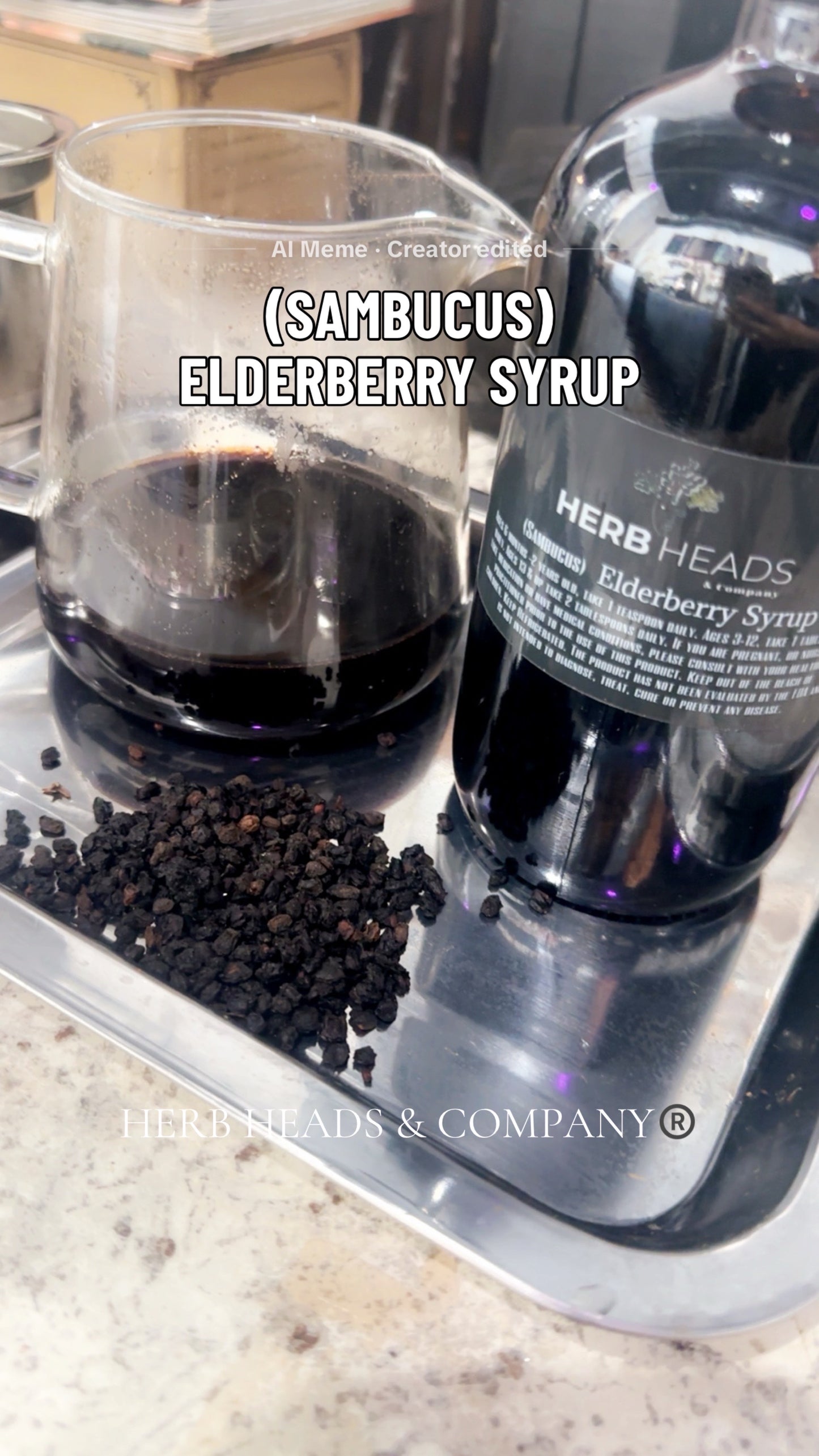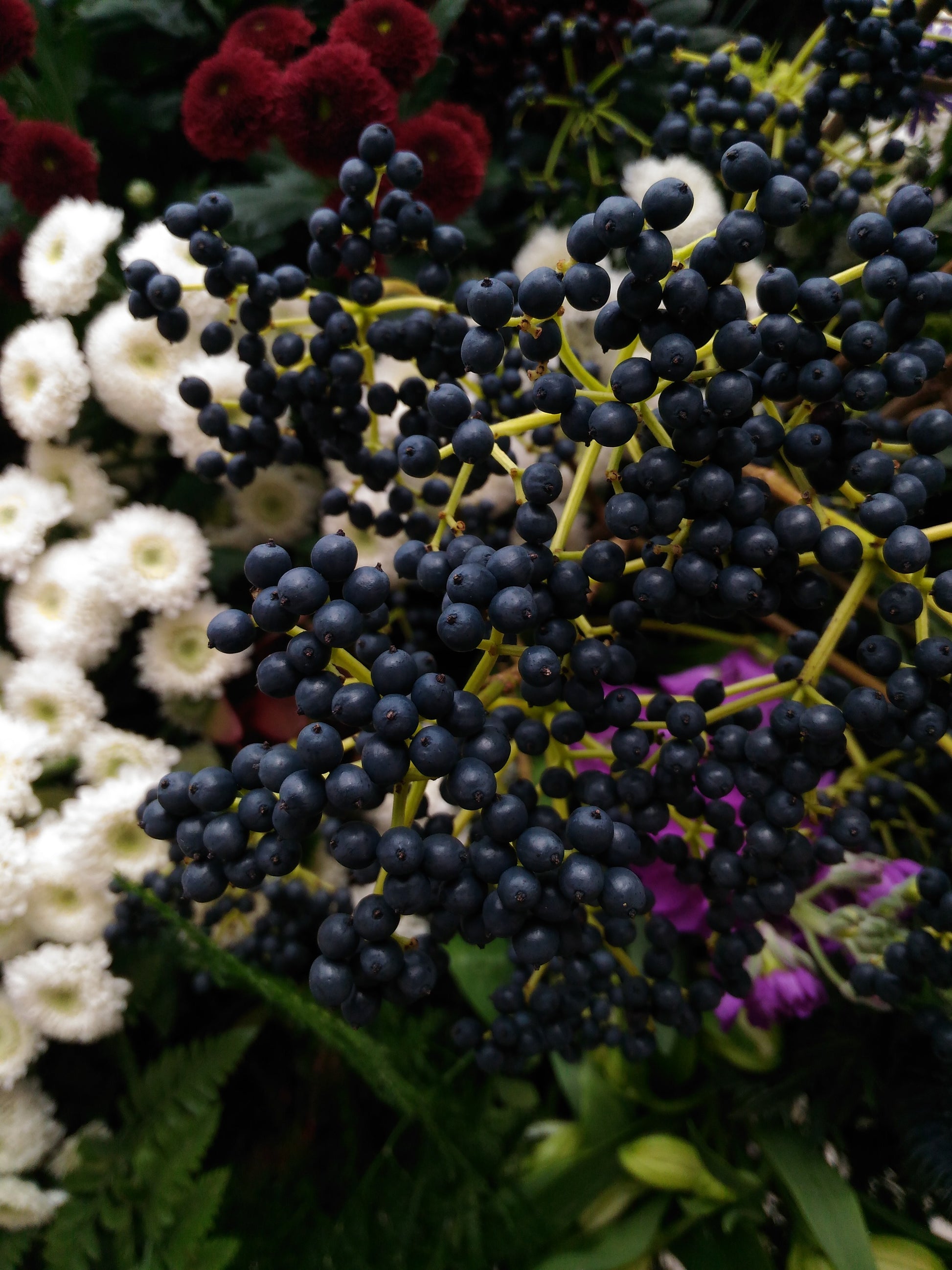HERB HEADS & Co.©️
Elderberry (Sambucus)
Elderberry (Sambucus)
Couldn't load pickup availability
Elderberry (Sambucus) is a genus of flowering shrub in the Adoxaceae family, which with members in temperate to cool regions around the world. One of the most well-known types is the Sambucus nigra, found in Europe and North America.
Elder, has an overpowering unique taste and smell. It’s use to prevent or cure illnesses, and to promote health. Once colonists came to North America, they found the American Elder, which is used by Native Americans for medicinal purposes as well.
It’s used to treat various respiratory disorders, fever, and rheumatism. The berries, bark, flour, and leaves are all rich in polyphenols, glycosides, and terpenoids compounds, and can be used medicinally. Plant extract and supplements are used against upper respiratory infection, bronchitis, cough, flu, and other respiratory issues. A poultice made with elderflower is also a tissue healer when used topically.
Elder can also be used as an eye wash for any form of conjunctivitis or eye irritation. A tea of the fruit or flower can relieve constipation, and it seems to increase the number of stool passes. Elderberry juice or syrup seems to relieve flu symptoms and reduce the length of time the flu lasts when taken by mouth.
Taking elderberry juice with echinacea also seems to relieve flu symptoms and reduce the length of time that a flu lasts. Compounds found in elderberry may modulate immune system responses.
Elderberry seems to have activity against viruses, including the flu, and bacteria which affect the respiratory tract and may reduce inflammation. Elderberry fruit extract are generally safe when taken by mouth, in reasonable amounts. It is possibly unsafe to consume leaves, stem, unripe fruit, or uncooked fruit of elderberry. The uncooked portion contains cyanogenic glycosides which can cause nausea, vomiting, and severe diarrhea.
Materials
Materials
Shipping
Shipping
Care Instructions
Care Instructions












